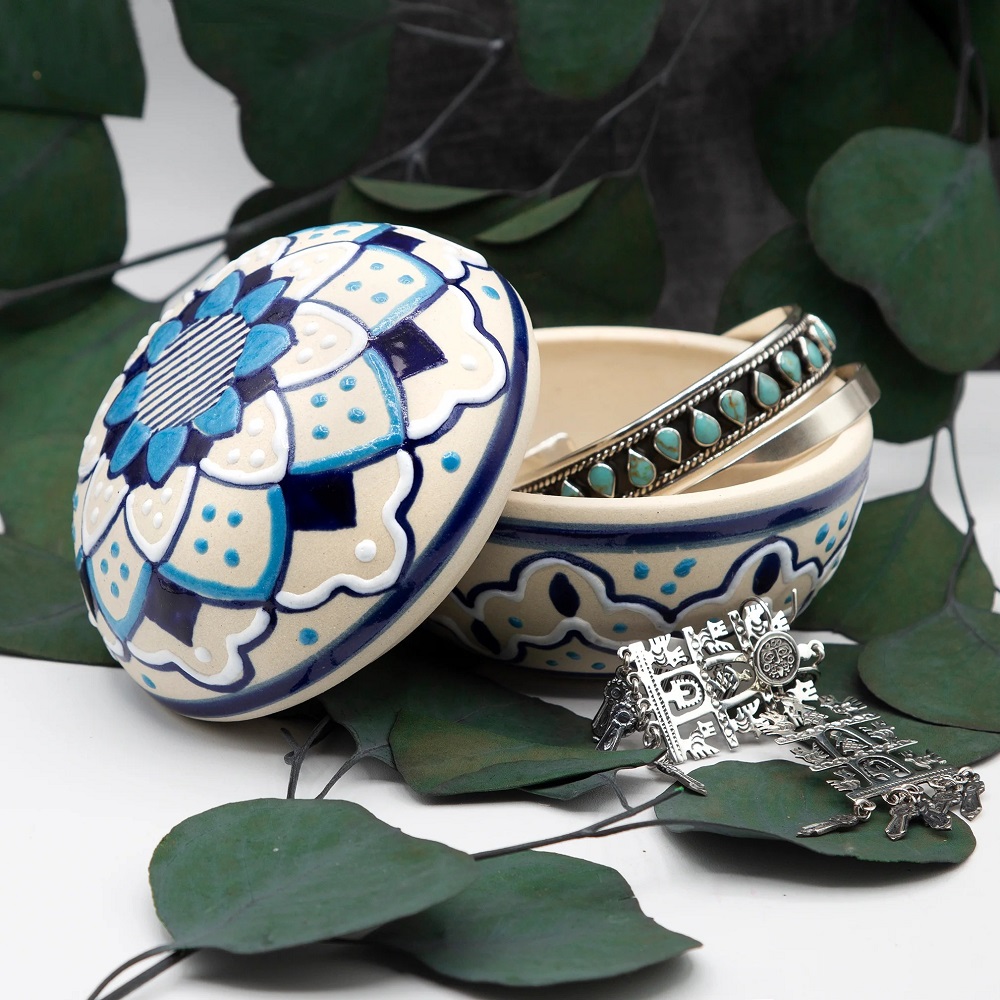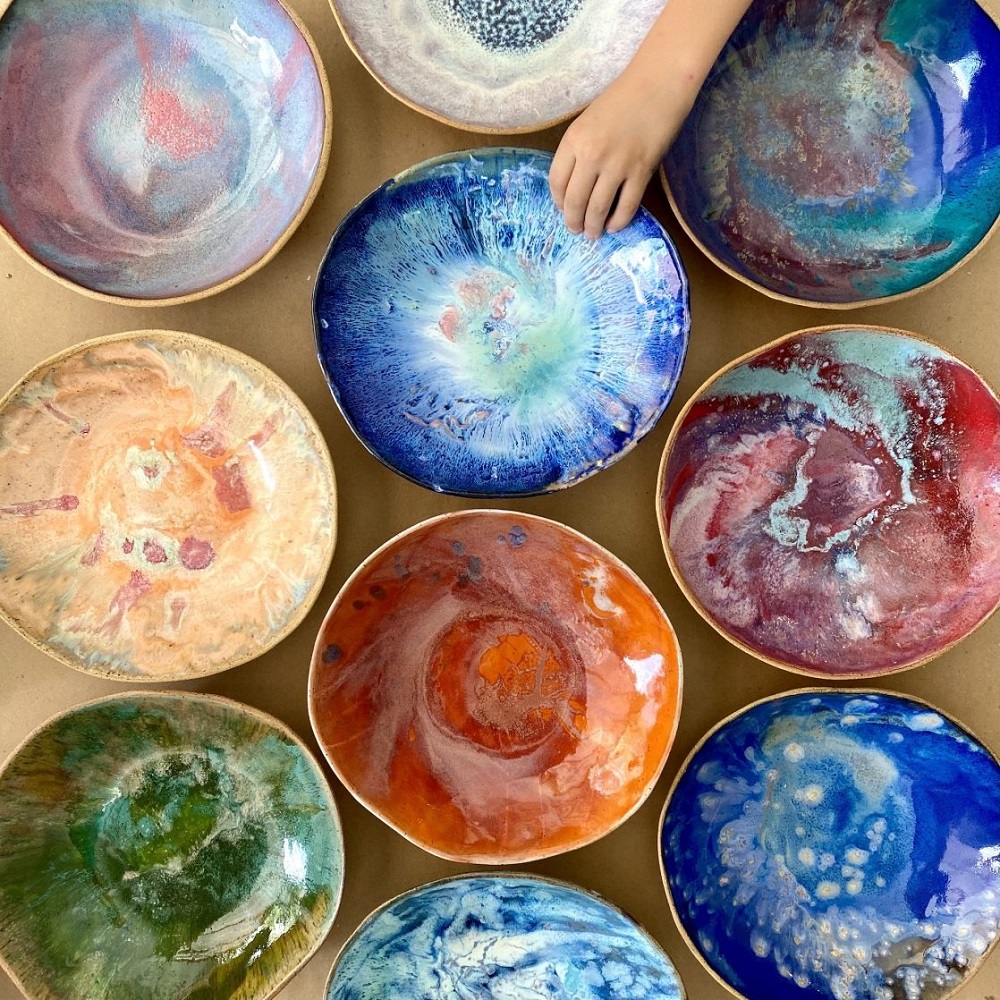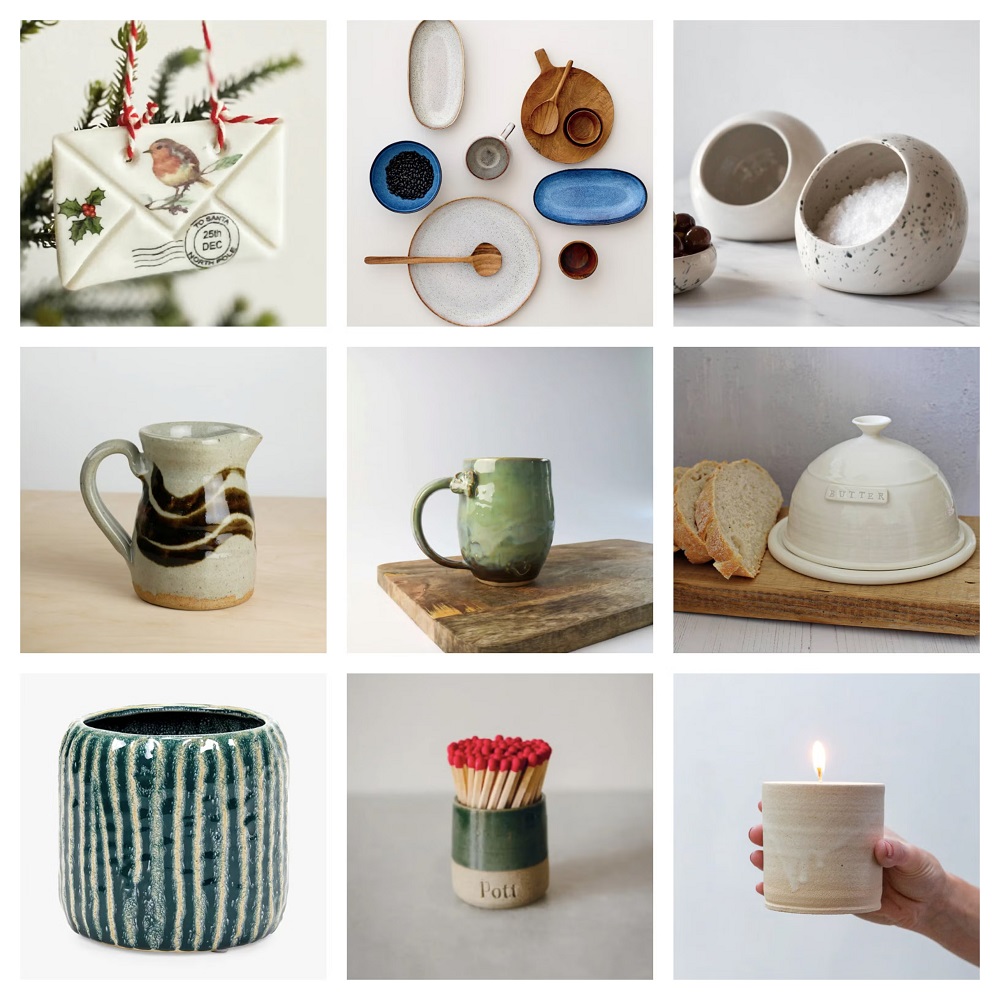What is Ceramics?
Ceramics encompass a broad range of hard, non-metallic materials. They undergo a heat process known as firing. This process gives ceramics their firmness and stability. Common examples of ceramics include porcelain, earthenware, and stoneware. Each type has a unique firing temperature and composition.
Most ceramics contain a mix of clay, earthen elements, powders, and water. When artisans shape and fire them, the resulting items become both decorative and functional. Ceramics are not limited to pottery; they also include tiles, figurines, and even high-tech components. Ceramics are notable for their resistance to heat and corrosion, making them valuable in various applications. The difference between pottery and ceramics is often in the level of refinement and intended use. Ceramics often involve more sophisticated techniques and materials.
What is Pottery?
Pottery represents another subset of ceramic arts but focuses on objects crafted from clay. Artisans mold the clay into desired shapes. Then, they heat it in a kiln at lower temperatures compared to some other forms of ceramics. This process hardens the clay, turning it into pottery.
Pottery often involves more traditional techniques. It includes items such as pots, vases, and dishes. These are objects used regularly in homes around the world. The difference between pottery and ceramics is sometimes in their crafting process. Pottery is usually hand-thrown or shaped by artisans, giving it a personal touch. It can also include decorative elements, but the emphasis is on function and tradition.
The term ‘pottery’ is also used more broadly to refer to the art or craft of the potter. Not only the objects produced but also the methods used. The history of pottery dates back thousands of years. It is one of the oldest human crafts. Many societies treasured pottery for its practical uses. They continue to do so, but pottery is also collected for its beauty and historical value.

Historical Context of Ceramics and Pottery
The history of ceramics and pottery is deep-rooted in human civilization. These arts date back over 20,000 years, reflecting the progression of societies. Early humans discovered the functionality of clay. They transformed it through fire into lasting items. Over time, this craft spread across continents, evolving with culture and technology.
In ancient civilizations, pottery served as essential household items for storing food, water, and grain. Each society developed its own distinct pottery styles. These styles were indicative of their time and place. For example, the porcelain of ancient China became world-famous. It was prized for its delicate beauty and intricate designs. Similarly, Greek pottery is renowned for its geometric patterns and mythological motifs.
Ceramics took a leap forward with the invention of the potter’s wheel. This happened around 3000 BC. This technology allowed for more uniform and complex shapes. Thus, the line between function and art began to blur. The potter’s wheel was a pivotal moment in the history of pottery. It signified the transition from purely utilitarian objects to pieces valued for their aesthetics.
The use of glazes in ceramics, which started around 1500 BC, added a waterproof, decorative coating. This innovation expanded the functional uses of ceramics. It also led to the development of glossy, colorful pottery that could showcase artistic expression.
In the context of modern history, both ceramics and pottery reflect industrial and artistic developments. Industrial ceramics are key in technology, while handcrafted pottery preserves traditional methods. The distinction between ceramics and pottery may seem subtle. Yet, it is underscored by centuries of history, innovation, and cultural significance.
Material Composition and Properties
Understanding the material composition and properties is crucial in distinguishing the difference between pottery and ceramics. Ceramics typically involve a more complex mix of ingredients. They include a variety of clays, earthen elements, powders, and water. Upon firing in a kiln, ceramics exhibit high strength, resilience to heat, and corrosion resistance. These properties make them ideal for a wide range of uses beyond traditional pottery items.
Pottery, on the other hand, primarily uses natural clay. It may sometimes include added minerals to modify the texture or color. After shaping, pottery is fired at lower temperatures than most ceramics, resulting in a porous and less vitrified material. Consequently, pottery is more about function and tradition. Its lower firing temperature limits its strength compared to other ceramics, but it remains durable enough for everyday items like pots and dishes.
In both cases, the choice of materials and their composite properties influence the final product. Colors, textures, and the final glaze applied to the pottery or ceramic piece determine its visual appeal and usability. For example, porcelain, a type of ceramic, is known for its fine grain, thin construction, and smooth surface. Stoneware, another type, is thicker and more opaque, often used for functional items due to its durability.
To sum up, the difference between the compositions of pottery and ceramics defines their distinct properties. Ceramics may require more sophisticated materials for advanced properties, while pottery remains rooted in simplicity and tradition.

Production Processes: Handcrafted Pottery and Industrial Ceramics
The production of pottery and ceramics varies, with key differences in methods and scale. Pottery is often crafted by hand, a traditional process involving artisans shaping clay on a potter’s wheel or by hand. The clay pieces are then carefully dried and fired in a kiln. This handcrafted approach gives pottery its unique textures and forms, reflecting the artisan’s skill and style. The production process is generally slower and allows for individual creativity and customization.
Industrial ceramics involves more mechanical processes and automation. Factories use high-tech machinery to mix clay and other materials. They employ precision molding techniques to achieve consistent results. Advanced kilns with controlled environments fire these ceramics at high temperatures. This results in a product with enhanced durability and resistance to heat and wear. Industrial ceramics are widely used in technology and manufacturing, ranging from electronic components to medical devices and aerospace parts. Each piece is replicated with precision, catering to the demands of modern industry.
In summary, handcrafted pottery embraces the artisan’s personal touch and centuries-old techniques. Industrial ceramics, on the other hand, rely on technological advancements to produce high-performing materials suitable for various industrial applications. The choice between the two often depends on the intended use, with pottery favoring tradition and ceramics aligning with modern engineering needs.
Functional Uses in Society
Ceramics and pottery have served functional roles in society throughout history. Today, their uses continue in various forms. In homes, ceramics are present in cookware, tableware, and sanitary wares, like sinks and toilets. They withstand high temperatures and frequent use due to their heat resistance. Beyond the household, ceramics play a role in construction with tiles for floors, walls, and roofs, offering durability and ease of maintenance.
Pottery, with its lower firing temperature, is often found in gardening pots, terracotta planters, and decorative vases. These items bring warmth and a classic touch to interior and exterior spaces. Their porous nature is helpful for plants, allowing roots to breathe. Pottery pieces are also useful in food storage. Jars and containers made from pottery can help keep food cool and dry.
In public and commercial areas, both ceramics and pottery contribute to cultural aesthetic. Public art installations, monuments, and architectural details often incorporate ceramic materials. Their variety in color and form enhances visual appeal of spaces. Pottery, too, can be found as part of the decor in restaurants, hotels, and office spaces, reflecting local craftsmanship and tradition.
The use of ceramics extends to advanced fields. They are critical in medical implants, automotive parts, and electronic devices. Their resistance to wear and electrical insulation properties make them indispensable in these high-tech environments. In contrast, pottery remains embedded in more everyday, traditional functions, though still appreciated for its utility and beauty.
To conclude, the difference between pottery and ceramics is not only in their material composition but also in their functional uses in society. Ceramics accommodate modern-day needs where durability is key, whereas pottery honors traditional techniques and remains celebrated for its aesthetic and practical domestic uses.

Aesthetics and Artistic Expression
The beauty of both ceramics and pottery lies in their aesthetics and artistic expression. These forms allow artists to convey creativity, cultural stories, and personal style. Let’s delve into the visual differences and expressions that set these two apart.
Ceramics are known for their wide range of artistic expression. They often display intricate designs, vibrant glazes, and can have delicate forms. Porcelain, for example, is highly regarded for its translucent quality and grace. It’s a canvas for artists to paint detailed scenes or floral patterns. Ceramics can take on glossy finishes or remain unglazed for a more natural look. This versatility makes ceramics a favorite in refined artistic circles.
Pottery, while simpler in structure, carries profound cultural significance. Its rustic feel and visible handiwork bring a sense of intimacy and warmth. Stoneware, a robust type of pottery, often features muted tones and hearty textures. Artisans may imprint patterns, or leave marks from the potter’s wheel, celebrating the hands-on process. Traditional pottery may even carry symbols or markings important to its heritage. The earthy and robust nature of pottery connects users to the material’s origin and the story of its creation.
Artistic expression in pottery and ceramics also becomes a part of their identity. Collectors and art enthusiasts look for uniqueness and the maker’s mark as a sign of authenticity. These pieces don’t just serve a function; they’re admired for their artistic value.
In modern times, the line between ceramics and pottery continues to blur, with artists experimenting in form, function, and aesthetics. Nevertheless, the core difference remains: pottery emphasizes traditional, functional craftsmanship, while ceramics serve as a broader platform for artistic innovation.
Collecting and Valuing Ceramic and Pottery Pieces
The world of collecting ceramics and pottery is vast and varied. Enthusiasts prize pieces for their history, craftsmanship, and beauty. Understanding the difference between pottery and ceramics can greatly enhance appreciation and valuation.
Collectors often look for the uniqueness in a piece. This could be a rare design, an artist’s signature, or a notable production method. Rarity drives value, and pieces from renowned artists or historical periods command high prices. Factors such as age, rarity, condition, and provenance all play a part in a piece’s value.
Pottery has its own appeal among collectors. Items with a clear handcrafted quality, such as visible throw lines or hand-painted decor, are highly sought after. Symbols or motifs map to a culture, adding to a pot’s value.
When valuing ceramics, collectors consider the complexity of the material and how it was fired. High-end ceramics, like porcelain, often have intricate, precise glazes and shapes. Their sophistication in production reflects in their market value.
Collecting also involves a lot of learning. Knowledge of the difference between pottery and ceramics helps in making informed choices. It’s important to research, visit auctions, and speak with experts. Authenticity is key, as reproductions can sometimes mimic originals. You might use simple tests or consult professionals to ensure a piece is genuine.
Finally, the joy of collecting ceramics and pottery comes from a personal connection. Whether it is the aesthetics, the touch of a well-worn pot, or the brilliance of a ceramic glaze, collectors cherish the stories and emotions linked with their pieces. As such, while the market sets some standards, personal value often holds the true worth for the collector.